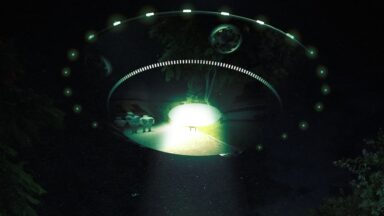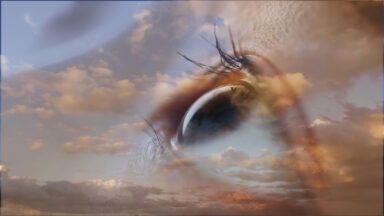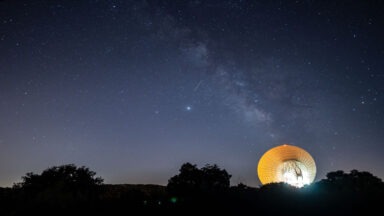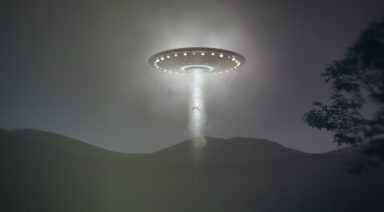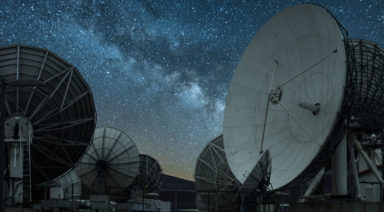Avi Loeb’s Galileo Project to Use Satellites to Scan Earth for UFOs

The search for UFOs usually has us looking out into the depths of space, but what if we flipped it around and looked towards the Earth from space? Can we find UFOs from above?
An attempt to search for UFOs by pointing satellites at Earth; that’s the idea in Harvard professor Avi Loeb’s latest article for The Hill.
Loeb, also the author of “extraterrestrial: The First Sign of Intelligent Life Beyond Earth,” and founder of the Galileo Project, explains,
“We are planning to use satellite data and potentially look at unidentified objects from above. Of course, the advantage of that is we can cover the entire Earth, if we put telescopes on the ground, we need to put a lot of them to cover the same area. The goal is to establish the reality of objects, first of all, from both directions; from above using satellite data, and from below using telescope systems, and one would guide the other. So, if we see regions of activity we can put our telescope systems there. If our telescope systems see something of interest, we can monitor what that thing does from satellite data. So, I think it’s an extremely powerful method of verifying and guiding the inquiry to the nature of unidentified aerial phenomena.
Founded in the summer of 2021, the goal of the Galileo Project is to bring the search for extraterrestrial technological signatures into the mainstream. What is the next step when we find something?
“The Galileo Project has two branches: one is to figure out the nature of any object near Earth. We plan to pursue that by using ground-based telescopes that we build, but also satellite data from Planet Labs, for example.
“The second branch of the Galileo Project is to search for objects that appear weird, like Oumuamua, that does not look like a comet or an asteroid, that enter the solar system from outside. The Vera Rubin Observatory will search for such objects within a year, and we plan to design a space mission to bring a camera close to an object like Oumuamua and take a high-resolution image of it because they say a picture is worth a thousand words.”
Loeb pointed out in his book that if we had a system in place when Oumuamua soared through our solar system in 2017, we would have photos of the object. Now with this plan, we will be ready for the next Oumuamua. But how will humanity react?
“We have no protocol as to how to respond to an object that is so close to us. All the past protocols were designed for a signal that comes from a distant star very far away, and we would have plenty of time to think [about] how to respond to such a signal. But if there is an object next door the question is: What is its intent? What kind of information is it gathering? Who would represent humanity? And what should we do about it? These are questions to which we don’t have answers, and they will have major societal implications. So, as part of the Galileo Project, we are pondering these questions. We don’t have answers, as of yet.”
The Galileo Project is building its first telescope system on the roof of the Harvard College Observatory. It will take some time and lots of funding to realize their vision of hundreds of telescopes around the world, but they hope to find some data soon.
Scientist's Claim of UFO Fuel Source Verified Decades Later

Bob Lazar—perhaps no other name is as provocative in ufology as the man who introduced the world to the government’s most classified military facility, colloquially known as Area 51. Claiming to have once been employed at a secret test site in the Nevada desert, Lazar alleges he worked to reverse engineer one of nine alien spacecraft he says are hidden there.
The story begins in the 1980s, when Lazar was contracting as a physicist at Los Alamos National Labs in New Mexico — the infamous home of the Manhattan Project where the nuclear bombs dropped on Hiroshima and Nagasaki were designed. Prior to his employment at Los Alamos, Lazar claims to have studied physics at MIT, and electronic technology at CalTech.
While at Los Alamos, Lazar recounts a process in which he was heavily vetted and specifically asked about his interests outside work, including the construction of a particle accelerator he built in his master bedroom. Soon, he said, he was tapped by military defense contractor EG&G to conduct highly-secretive work at a clandestine site within Area 51 known as S-4. Lazar says his superiors worked to get him what they called a “Majestic” clearance level in order to enter the facility.
In 1989, Lazar decided to blow the whistle and share his story on Las Vegas news station KLAS-TV, obfuscating his face and using the pseudonym “Dennis,” in an exposé with investigative reporter George Knapp. Eventually, he would shoot a follow-up with his face and true identity exposed, while also revealing that “Dennis” was the name of his alleged supervisor at S-4.
Since then, Lazar has been in some way related to countless attempts to either prove or debunk the conspiracy that the U.S. government (and/or a defense contractor) is in possession of highly advanced spacecraft not of this world, and that it has kept this knowledge hidden from the public for decades.








